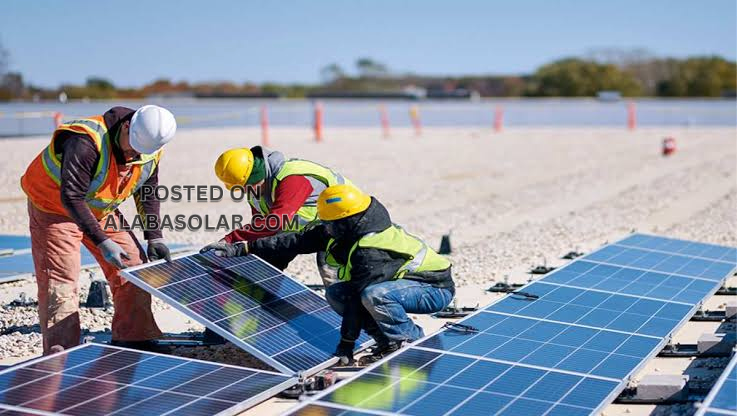Solar Panel Installation: A Complete Guide to Powering Your Home with Sunshine
Imagine cutting your electricity bill while helping the planet! Solar panel installation makes this a reality. It’s a smart way to invest in your home and the environment. Whether you go DIY or hire pros, this guide has you covered. We will help you figure out how to power your home with sunshine.
Understanding Solar Panel Basics
Let’s break down how solar panels work and their key parts. This understanding will help you make good choices for your home.
How Solar Panels Work
Solar panels use something called the photovoltaic effect. Sunlight hits the panel and creates electricity. Tiny particles of light, photons, knock electrons loose in the silicon. This movement makes an electrical current. This current is then used to power your home.
Types of Solar Panels: Which is Right for You?
There are a few kinds of solar panels:
- Monocrystalline: These are efficient and last a long time. They are made from single crystal silicon. They are often more expensive.
- Polycrystalline: Made from many silicon fragments melted together. A bit less efficient than monocrystalline, but cost less.
- Thin-film: These are flexible and lightweight. Less efficient and shorter lifespan but can be used where other panels cant.
Think about cost, space, and efficiency when you are picking panels.
Key Components of a Solar System
A solar system includes more than just panels. Key parts are:
- Inverters: Change DC electricity from the panels to AC electricity for your home.
- Batteries: Store extra energy for use when the sun isn’t shining.
- Racking Systems: Securely mount the panels to your roof.
Each part plays a vital role in a good working system.
Assessing Your Home’s Solar Potential
Before you install panels, check if your home is a good fit. There are a few things to think about.
Evaluating Sunlight Exposure
How much sun does your roof get? South-facing roofs usually get the most sun. Check for trees or buildings that might block sunlight. More sunlight equals more energy.
Roof Condition and Suitability
Is your roof in good shape? It needs to support the weight of the panels. Any needed repairs need to be done before installing panels. A strong roof ensures a safe install.
Energy Consumption Analysis
Look at your past energy bills. How much electricity do you use each month? This helps you figure out how many solar panels you need. A correct size system helps you save money.
DIY vs. Professional Solar Panel Installation
You can install the panels yourself or hire a professional. Each way has its pluses and minuses.
The DIY Solar Panel Installation Process
Doing it yourself takes planning. Here are the steps:
- Planning: Design your system and get permits.
- Installation: Mount the panels, wire them up, and connect them to the inverter.
- Inspection: Have an electrician check your work to make sure it is safe.
Make sure you have the right tools and take safety seriously.
Hiring a Professional Solar Installer
Professionals have experience and know-how. The perks include:
- Expertise and help with permits.
- Warranties and guarantee on their work.
- Peace of mind that the job is done right.
Though it costs more, it can save you headaches in the long run.
Cost Comparison: DIY vs. Professional
DIY might save you on labour costs. However, you need to buy all the equipment and tools. Professionals include these costs in their quotes. Factor in hidden costs like mistakes and redoing work.
Financing Your Solar Panel Installation
Solar panels are a big investment. There are ways to make it more affordable.
Solar Loans and Financing Options
You can take out a loan to pay for the panels. Look at different loan terms and interest rates. Shop around for the best deal.
Solar Leases and Power Purchase Agreements (PPAs)
With a lease, you rent the panels. With a PPA, you buy the power the panels make. There are upsides and downsides to both, so do your homework.
Solar Incentives, Rebates, and Tax Credits
Governments often have programmes to help with the cost. Look into federal, state, and local incentives. These can really cut down on the final price.
Maintaining Your Solar Panel System
Keep your system in great shape for top energy production.
Regular Cleaning and Inspections
Clean your panels a few times a year. Dust and dirt can block sunlight. Check for damage or wear. A clean system works better.
Monitoring System Performance
Keep an eye on how much energy your panels are making. Most systems have monitoring tools. If production drops, there may be a problem.
Troubleshooting Common Issues
Common problems include shading, inverter problems, and connection problems. Learn how to spot and fix these early. This can save you money.
Conclusion
Solar panel installation is a great way to save money and help the earth. Careful planning and good decisions are very important. Take the next step and start powering your home with sunshine!
